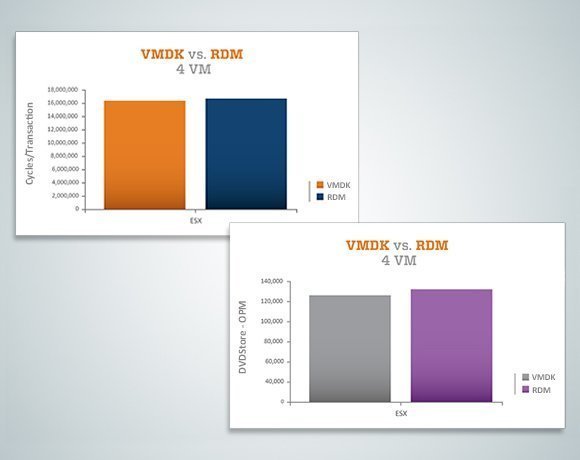Getting VMware terminology straight
VMware virtual machines comprise a set of files in typically one of two given formats: virtual machine file system (VMFS) or raw device mapping (RDM). Both formats enable you to access the virtual machine's disk (VMDK), but they differ in approach to storage, and VMware recommends VMFS for the vast majority of VMs. With RDM, VMDK files are only pointers to a VM's disk data, while on VMFS the files also hold the data. VMFS holds disk data from multiple VMs; RDM does not.
VMFS was designed specifically to support virtualization. While RDM is sometimes recommended for I/O-intensive operations, VMware studies show that the performance difference found in VMFS versus RDM formats is negligible.
With VMFS, a storage volume can support one or many VMs. This volume can change without affecting network operations. By sharing storage volumes, VMs are easier to manage and resource utilization remains high. Various ESXi servers can read and write to the file system at once, because it stores information at the block level.
With RDM, the VM directly connects to the storage area network (SAN) via a dedicated storage logical unit number (LUN). The total number of LUNs visible to an ESXi host is capped at 256, with the same LUNs visible across a whole cluster of up to 32 ESXi servers. RDM is recommended in a few specific situations, such as when a virtual machine is SAN-aware.
Read about RDM and VMFS
Expert analysis of RDM and iSCSI
Deep dive into VMFS 5
Advice for sizing VMFS data stores










